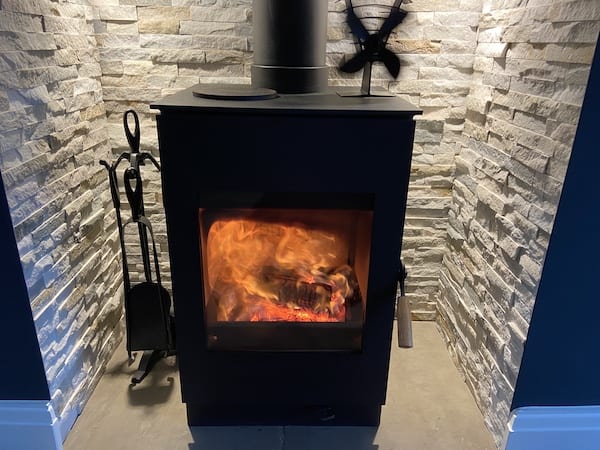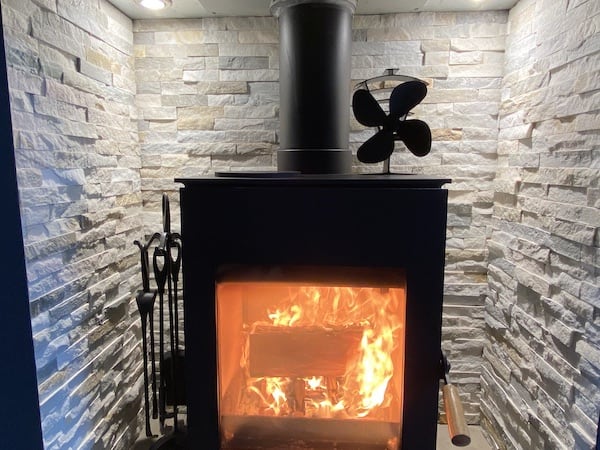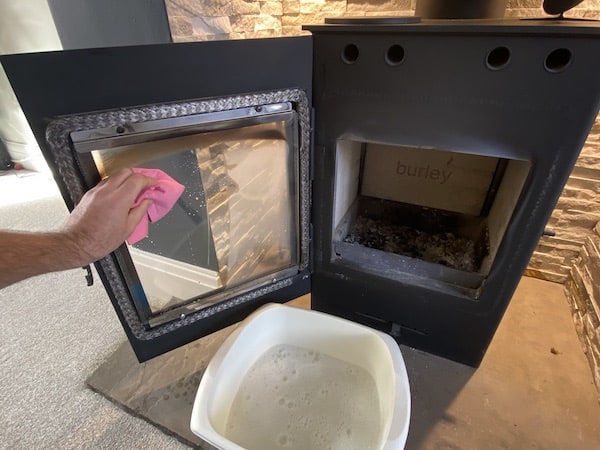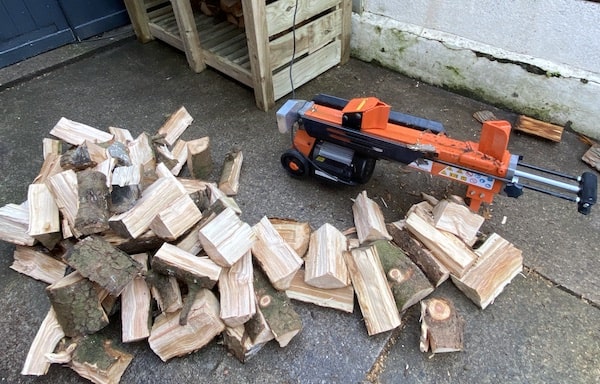Last updated on February 16th, 2022
Our site is reader supported, this means we may earn a small commission from Amazon and other affiliates when you buy through links on our site.
Average log burner installation costs and everything you need to know
The cost of installing a wood burner can vary greatly and much of it will depend on the type of stove you want to buy and how much work needs to be done. If you are thinking of installing a wood burner in your home, this guide should help you estimate your overall cost and help you decide what you need to take into consideration and whether it’s even the right thing to do. Which? magazine recently did a survey of 237 people and concluded that total cost including installation was on average £1897, and £1500 on average according to the Stove Industry Alliance, however, prices can vary significantly to well over £3000 because it all depends on the cost of the stove and all installation work that is needed.
How much will you be spending on buying a stove?
Stoves themselves come in a wide range of prices. The number one factor impacting the cost of a wood burner is whether it’s a multi-fuel or just a log burner. Multi-fuel burners generally tend to be cheaper than log burners. Yet, most people prefer wood burners to multi-fuel stoves.

The other problem people often face is they see two wood burners each with the same kW rating and they look very similar but one is around £400, while the other is £800, so what’s the difference? Most of the time, the cheaper model is a Chinese import and it’s simply not made to the same standard. For example, the life expectancy of the cheaper models is probably around 2-5 years while the more expensive stoves will easily last 10-15 years, if not much longer. The steel grading on the side and top will be much thicker and the cast iron quality much better. Not to mention the glass often becomes black on the cheaper models while more expensive models use manual primary and secondary air inlets and air wash keeps glass clean but using cold air to do so, while some of the higher premium models use warm air, which is even more effective at cleaning the glass.
Pros and cons of wood burners
For beginners, wood burners tend to be less costly than multi-fuel systems, both in terms of the actual purchasing cost and heating costs. As a matter of fact, log burners and wood fuel are the cheapest heating option available.

Another advantage of wood burners is that they are the cleanest heating option in the context of the environmental footprint if they are well-maintained. Lastly, log burners can be converted into multi-fuel stoves simply by incorporating a grate.
On the downside, in rare events, wood stoves can produce harmful carbon monoxide in the event that flue gets blocked so be sure to have a carbon monoxide tester.
Pros and cons of multi-fuel stoves
The obvious advantage of multi-fuel stoves is the ability to use a variety of fuels, whether it be wood, coal or peat. Coal is especially known to produce more heat per volume than wood. Unless utilising wood, multi-fuel stoves do not produce dangerous carbon monoxide and they have less fire risk than wood burners although modern log burners are now very safe.
Apart from being expensive, multi-fuel stoves may produce thick, toxic smoke when burning coal that is harmful to the surrounding environment.
That said, it’s important to note that many manufacturers are in line with DEFRA requirements in their stoves production. Therefore, you can expect to get wood burners or multi-fuel stoves designed to produce clean energy so even this is not a major concern anymore.
What’s more?
Size and wattage requirements also affect wood burner prices. Stove wattages range from 3kW for smaller stoves to up to 18kW for the biggest stoves capable of heating the whole house and even providing hot water. The average stove is 5kW, according to the Stove Industry Alliance (SIA). Generally, the more the wattage, the higher the price. Wattage is determined by the size of your room. Below are the average estimated stove costs based on wattage:
The average price of log burners
- 3kW-5kW – £400
- 6kW-8kW – £650
- 9kW-10kW – £900
- 11kW-12kW – £1100
- 13kW-14kW – £1200
- 15kW-18kW – £1400
The average price of multi-fuel stoves
- 3kW-5kW – £450
- 6kW-8kW – £750
- 9kW-10kW – £900
- 11kW-12kW – £1000
- 13kW-14kW – £1200
- 15kW-18kW – £1300
Note that stoves with wattage more than 18kW tend to come with back boilers, enabling them to heat an entire house. Boiler stoves cost in excess of £1000 to around £2000.
Ideally, you are likely to pay more for a stove with plenty of useful features. For instance, if a stove is larger than average and with bigger windows, or it’s double-sided, thus allowing you to see the flame from multiple angles, then you can expect a hefty price tag.
How much does it cost to install a wood burner?
As we have mentioned before, the wood burner installation cost is around £1500 on average according to Stove Industry Alliance. Your actual cost will depend on what needs to be done in your home.

Do you have an already existing chimney or does one need to be built? Nevertheless, some relining must be done in order to prevent gases from escaping into your living room. And that calls for major investment.
If you don’t have a chimney, it makes sense to go for a freestanding stove. However, a flue must be created and this will involve a few structural changes to your house and it can be expensive.
Note that some installers also charge for fieldwork surveys so it’s important to shop around and compare costs, plus to know what is involved in a quotation. Labour fees also vary from installer to installer. One-man professionals may ask anything in the region of £500 but large firms will charge upwards of £1000. Complex installations like the ones requiring additional insulation or fireproofing require long man-hours and further costs.
Things to consider when buying a stove
Fuel type
Your choice of fuel determines how much it will cost you to run the stove. Much, however, depends on the fuel type that you have access to, ease of storage and whether or not you live in a smoke controlled zone. Going for wood? Seasoned logs will cost around £125 per cubic metre whilst kiln-dried logs average £140 per cubic metre.

Coal, on the other hand, can cost from £5 to £10 per bag. If you buy this in bulk, chances are that the price will be cheaper. There’s also the option of smokeless coal with a bag going for anywhere between £10 and £15. Smokeless coal is environmentally friendly because it releases fewer emissions than typical house coal. This is a good choice if you live in a smoke controlled area, which many people do.
Are there reliable fuel suppliers in your area?
You can’t miss a few suppliers near you because if you simply scour the net and a local store will pop up. Alternatively, check with your local factory or timber yard if they would let you take any resources being discarded such as old pallets but remember they will need to be seasoned first. A good place to start your search may even be eBay.co.uk.
How much storage space do you have?
Those opting for log burners especially need plenty of space to store fuel. The storage not only needs to be dry but also accessible for quick deliveries. Bear in mind that you can always buy moist, fresh logs and dry them yourself to use the next season. It can be a really cheap option if you choose to use a wood burner. We recommend investing in a log store for your garden, these can be a very cost-effective way of storing and drying out fresh logs. You can read our review of the best log stores we recently did here.
Do you live in a smoke controlled zone?
Many places in the UK are smoke-controlled areas and that means you can only use ‘exempt’ or DEFRA-approved stoves and burners. Click here to see a list of allowed fuels and exempt appliances.
How many rooms can you heat?
Stoves are generally installed in one room but that doesn’t mean that you can’t spread the joy in your entire home. By attaching the stove to a central heating system, you can heat other rooms in your home. Often if you just leave your doors open inside your home a stove can heat most of the house.
What kind of maintenance will be involved?
All types of stoves require maintenance to keep them in good order. The chimney must be swept at least twice a year in order to avoid harbouring harmful pollutants or becoming a fire risk. Maintenance costs should be around £60 to £120 per year. Expect around £200 per year for a pellet stove.
Can a wood burner help reduce heating bills?
This depends on several variables. Every home is different and so is every stove.
Bear in mind that logs need to be split and then dried for up to 3 years although many people do just dry them out for another season, this depends on the wood type and moisture content which you can test with a moisture meter. You can see our recently reviewed moisture meters here. That means you need a storage area. Note that you should never use damp wood in a log burner because:
- It’s challenging to start, or may never start.
- It produces a smoky fire with little or no flame.
- It’ll emit a lot of grey smoke from the chimney.
- It burns for a very short time and produces very little heat.
- It will dirty the glass.
- It produces lots of crackling.
Another factor that determines the cost of running a wood burner is the number of hours per week that the stove will be operational. That comes down to how much fuel you can use every week and, thus the cost of it per week and of course the weather.
In general, most homeowners do not save money by using a stove as opposed to a modern heating system. Well, unless they are getting free fuel. Otherwise, any amount that could be saved is often cancelled out by the high wood burner installation cost, compulsory maintenance and fuel cost. However, there is nothing better than having a log burner burning away while relaxing on a cold winter’s day.
All things considered, wood burners, just like electric or gas heaters, are a useful addition to any home. The choice between a wood burner/log burner and a multi-fuel stove largely comes down to where you live and what you prefer. Make sure you shop around to get a favourable wood burner installation quote.


